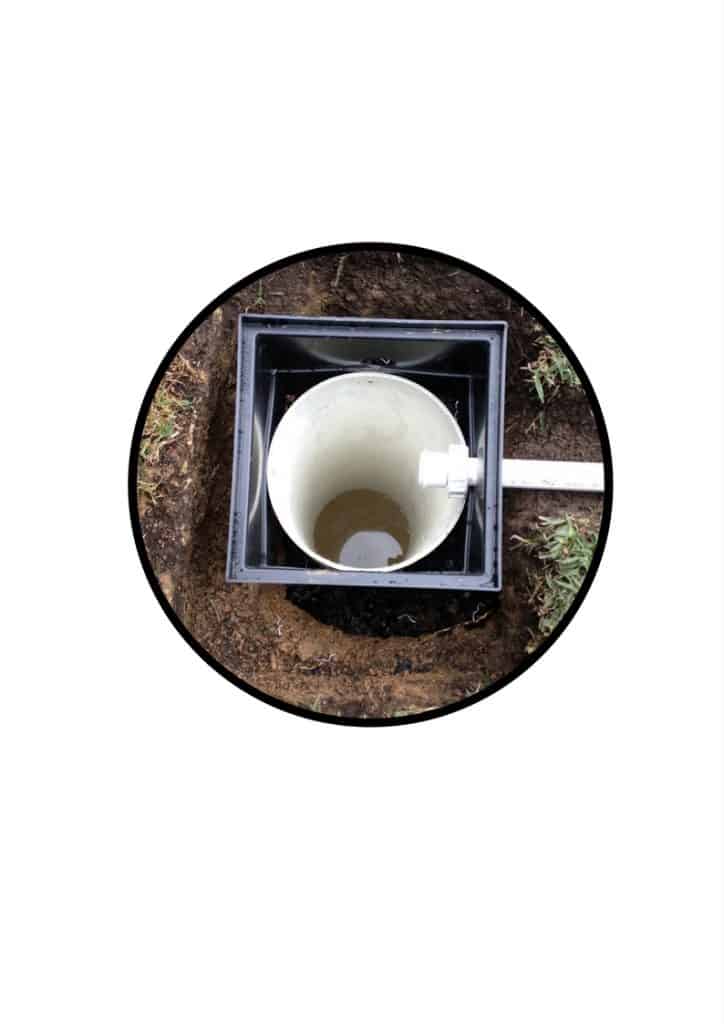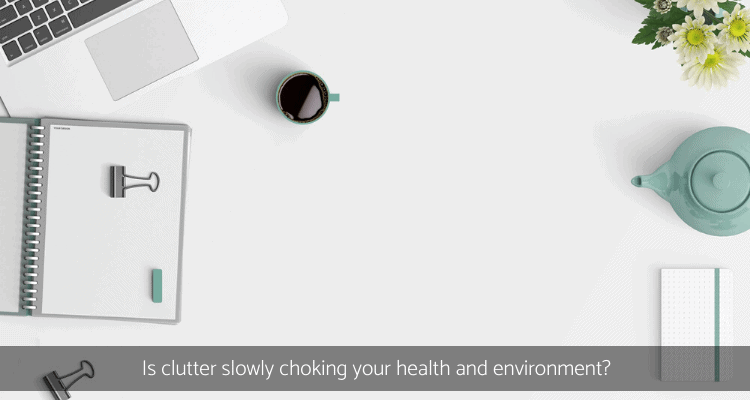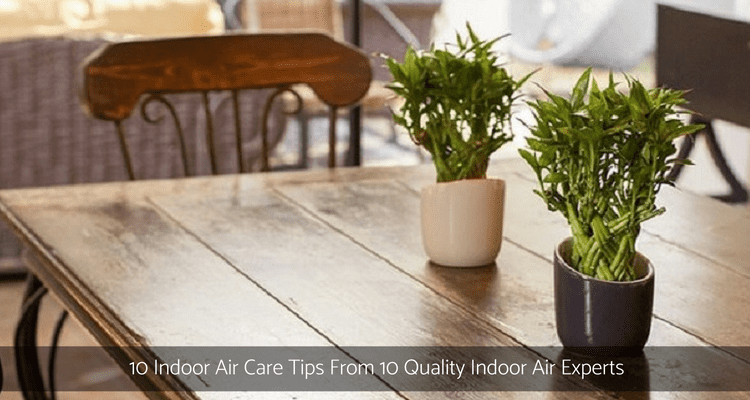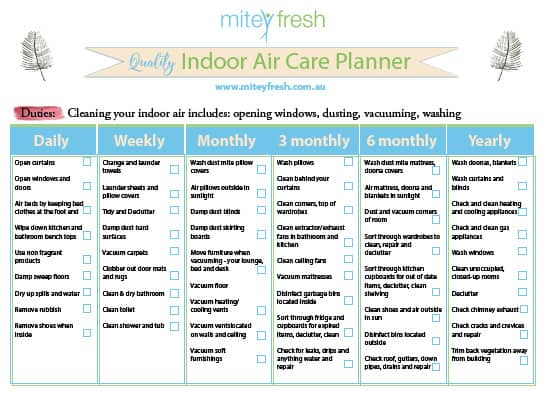Over the last month, we have asked some indoor air quality experts across the country to share just one Indoor air care tips (IAQ tip) with our readers. We would like to thank everyone for participating in this post. Hope you can learn a thing or two from these quality indoor air experts.
1. Practice Proper Ventilation (Using a Positive Pressure System) 
Nothing beats fresh air! The way we live these days with both parents usually working leaves our homes being locked up almost 24 hours a day. Mums are not at home so much anymore to leave windows and doors open to let airflow inside their home. We also tend to lock up our homes for security reasons so again, no exchanging of fresh airflow.
To make this job easier, the best tip I have is to use a proper ventilation system. Positive Pressure systems input dry, freshly filtered air, ventilating and forcing out damp, stale air. At the same time, it combats the build-up of condensation causing mould and dust mites giving you that fresh air without the contaminants.
Martin Haley Director from Xchange Air
2. Keep an Eye on Your Indoor Air Freshness
A combinat ion of ceiling fans and louvres for cross breezes. Also, essential oils infused.
ion of ceiling fans and louvres for cross breezes. Also, essential oils infused.
Jo Gillies Principal Architect and Founder to Archisoul
3. SWITCH TO SAFER!
Remove ha rsh, chemical laden cleaning and laundry products from your home and swap them out for safer, plant based alternatives.
rsh, chemical laden cleaning and laundry products from your home and swap them out for safer, plant based alternatives.
Conventional supermarket products expose the people we love to respiratory irritants and hormone disrupting fragrances (phthalates) and leave behind toxic residues that pollute our indoor air.
We all have control over the products we choose to invite into our homes through our front doors, so choose wisely!
Switching to safer Australian brands made by small family businesses such as Abode, Kin Kin, Resparkle, Ecologic and Our Eco Home, are better choices to protect the quality of our indoor air.
Danielle Shirley – Pharmacist, Herbalist and Director at Naturally Home
4. Check Your Finishing Product Ingredients
A sus tainable home is not necessarily a healthy one. Be aware of the finishing products you choose. We often compromise due to these products being required at the end of a build or renovation however they can work out very costly, health wise. Do not assume a low or no VOC product is the healthiest options. Many synthetic products continue to off gas for weeks and sometimes months after the coatings have dried, creating a detrimental effect on the indoor air quality. These semi VOCs can be released into the house dust and also absorbed through the skin. When choosing finishing products look for products that openly declare all ingredients so you can make a fully informed decision on exactly what’s coming into your home.
tainable home is not necessarily a healthy one. Be aware of the finishing products you choose. We often compromise due to these products being required at the end of a build or renovation however they can work out very costly, health wise. Do not assume a low or no VOC product is the healthiest options. Many synthetic products continue to off gas for weeks and sometimes months after the coatings have dried, creating a detrimental effect on the indoor air quality. These semi VOCs can be released into the house dust and also absorbed through the skin. When choosing finishing products look for products that openly declare all ingredients so you can make a fully informed decision on exactly what’s coming into your home.
Angela Petruzzi – Director and Educator at Livos Australi
PRODUCT:
Indoor Air Care Planner
Print this handy indoor air care planner and put on your fridge so the whole family can help take care of the indoors this year.
5. Master Indoor Air Like an Expert
Indoor Air Quality Association (IAQA) puts out courses and webinars on Indoor Air Quality, and provides its members with ongoing Education through newsletters and quarterly chapter meetings around Australia and internationally, that gives many tips for improving indoor air for people.
You are very welcome to join IAQA in our journey into ever better indoor environments. Our single tip is that if people want to understand indoor air quality in a scientifically robust manner, join IAQA Australia.
Dr Claire Bird – President Indoor Air Quality Australia
6. Wise Shopping Choices
Ther e is a plethora of evidence that indicate our everyday products we use around the home emit toxic chemicals into our indoor air and therefore potentially impacting our heath. The good news is that there are now so many less toxic cleaners, air fresheners, candles, deodorants, insect repellents etc available and easily accessible to everyone. By making wise shopping choices you can significantly reduce your indoor pollution.
e is a plethora of evidence that indicate our everyday products we use around the home emit toxic chemicals into our indoor air and therefore potentially impacting our heath. The good news is that there are now so many less toxic cleaners, air fresheners, candles, deodorants, insect repellents etc available and easily accessible to everyone. By making wise shopping choices you can significantly reduce your indoor pollution.
However, we do live in the real world where many aspects of the buildings that we live and work in also contribute to poor indoor air quality. Flooring, paint, woods, chipboard and insulation off gas and emit VOC’s into the air. Let’s face it, it’s often difficult and expensive to change or replace these items with less toxic items. Surprisingly there is an easy solution, plants. Houseplants are awesome indoor air cleaners, some of them are more effective than others at filtering out pollutants and toxic chemicals in the air. NASA has been studying air-filtering plants for decades for use in their space stations.
Jillian Exton – Director at Chemical Free Community
7. From the Ground Up
I am not an expert on air quality, but I do have some experience in related fields.
If air quality is compromised inside a house, it is highly likely unwanted moisture is present. This moisture probably causes damp and mould, and this can lead to health issues for many people. There is a really simple process to manage this………if there is moisture in the home ask the question, ”Does the roof leak?” If the answer is “No” then the moisture is not from the rain, it is from somewhere outside the home.
The solution is to identify the source of the moisture, and remove it. If the source of the moisture is gone, then the problem of moisture in the home is gone as well.
Denis Morgan – Director from Hygro Seepage Control Australia Wide
8. For the Smallest Room
Hope you’re well. We light a match in the loo after doing a ‘number 2’ which seems to absorb / remove the smell rather than overpowering it with some commercial scented air spray.
My mum heard that you can purify a room by putting a cut onion in there. Haven’t tried that one and probably won’t!
From the decluttering perspective, being able to easily access windows to open them and let fresh air flow through is a real bonus. If doors and windows are hard to get to, they’re less likely to be opened.
Helen Maguire – Director and Declutter Whisperer at Clarity Matter
Information:
Exciting post from Clarity Matters
Closed up rooms without good ventilation are breeding grounds for health problems. Yet there is one step worse than that, namely closed up rooms without good ventilation AND heaps of clutter, the opposite of minimalism!

9. Essential Oil Diffusers
Eucalyptus, peppermint, clove, thyme, lemon, Frankinsense (anti-fungal, anti-bacterial, anti-viral oils and ones good for respiratory system), clearing with Sage, Himalayan Salt Lamps and Crystals for cleansing. Reduce electro-magnetic radiation like wifi and electrical appliances.
Dehumidifier if humid. A water fountain or water feature to give off negative ions.
10. Neutral Materials
I fi nd dreamy silk doonas are perfect for indoor air care, they are a natural material, neutral in their material off gassing, they repel dust, and by using a non-toxic safe laundry / cleaning method that is kind to indoor air without harsh chemical aromas, ahh, can breathe.
nd dreamy silk doonas are perfect for indoor air care, they are a natural material, neutral in their material off gassing, they repel dust, and by using a non-toxic safe laundry / cleaning method that is kind to indoor air without harsh chemical aromas, ahh, can breathe.
Sean McAuliffe – Director with Dream Silks
BONUS! Number 11. Practice Proper Air Exchange
In this video, I briefly explain the benefits of proper air exchange and movement and flow throughout your home or office.
The most important benefit is to remove all of the contaminants from all horizontal surfaces. As we are taught by our mums and grandmas, the majority of the contaminants are on the top of the hard surfaces, and that by opening windows and doors, contaminants should disperse from these surfaces, and minimised by air exchange with fresh air from outside.
Video coming soon ….
I encourage you to have conversations about Quality Indoor Air and Air Purification, ask questions on the Mitey Fresh Linkedin page because other people may well be wondering the same thing, and I will do my best to answer them there. Or please call me directly on the land line 02 9986 3432.
Towards healthier living, Carol Parr ♥
Our passion comes from pure necessity that we can all live natural and healthy lives, we can all contribute to human wellbeing and preservation and determine the future health of our children and their environment tomorrow.
As a result of working with us, families thrive, sensitive occupants heal. They’re healthier, they’re alert, they’re happier, more relaxed, more productive, and enjoying life.
Together we bring about healthy indoor environments and create rooms that provide calmness, healthy sleep, relaxation and restored energy for you and your family.
By maintaining indoor spaces to close as possible more natural conditions, occupants are healthy and happy, it’s nice that it sustains our planet’s ecology, you’d agree.
References
ASHRAE. 2012. ASHRAE Position Document on Limiting Indoor Mold and Dampness in Buildings (Online). Available: https://www.ashrae.org/File%20Library/About/Position%20Documents/ASHRAE—Limiting-Indoor-Mold-and-Dampness-in-Buildings.pdf [September 10, 2015]
WHO Health Organisation. 2009. WHO Guidelines for Indoor Air Quality: Dampness and Moud. (Online). Available: http://www.euro.who.int/__data/assets/pdf_file/0017/43325/E92645.pdf [September 30, 2015]
Mold Survivor, 2001. Human health effects of indoor mycotoxin exposure in fungi – contaminated indoor environments. (Online). Available: http://www.mold-survivor.com/mycotoxinsfungi.html [November 10, 2015]
Author
-
We’re glad you’re here. We’re Carol and Tony, founders of one of the longest running Healthy Home Blogs in the world, Mitey Fresh Australia. We’ve been on this journey for the last 25 years and are passionate about helping families sift through health hazards and triggers like allergens, mould, water damage, chemicals and EMFs, to get clarity about what’s toxic and what’s not so they can create a healthy and happy home for their family they love. Each month, people visit this blog seeking focus on the health and wellbeing of their loved ones, sustainable and effective practice tips and guides, to help create and manage healthier indoor spaces, improve the built environment that is pleasing to the senses and support healthy living and nature, every day. Starting this blog was to help change people’s lives, one family at a time, and we can’t wait to share how its allowed us to stand next to you and show you how interpreting these synergies between buildings and the environment they are built in will impact upon the health and well-being of those who occupy them. Find out more about Healthy Homes and what this blog can do for you!







